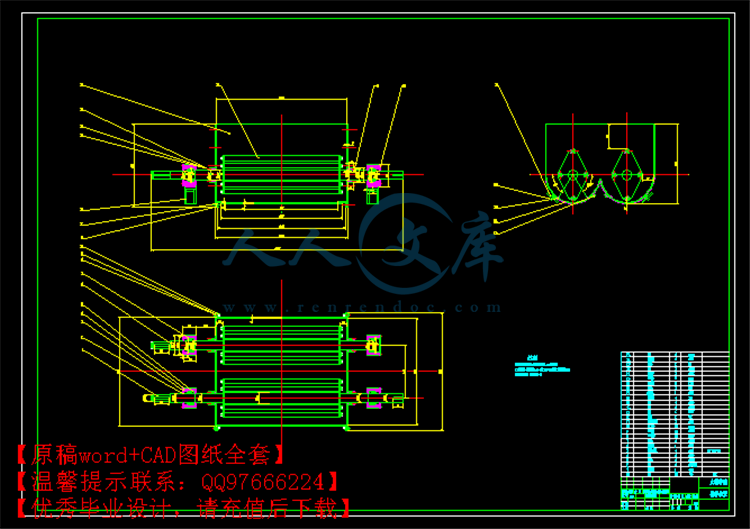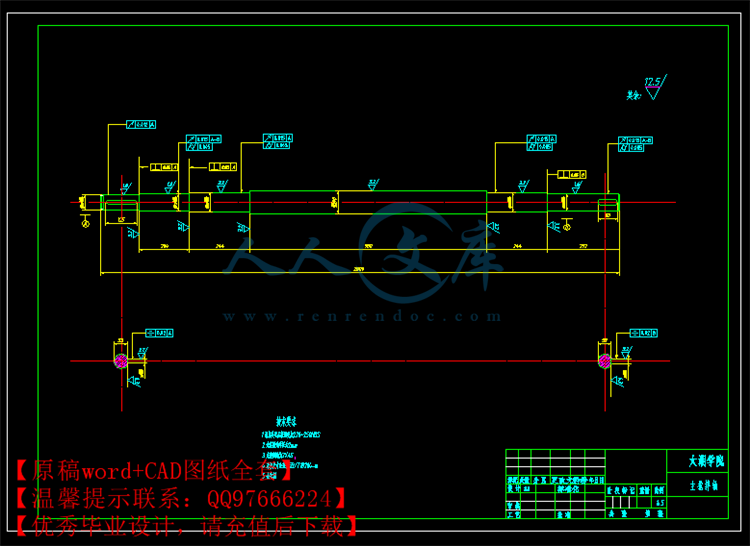摘 要
本文先叙述了方便面的历史与起源,大概分析了一下它的巨大前景。对方便面的生产流程有了初步认识,包括方便面的配料、生产概况、工艺流程、制作方法及整条产品生产线,特别重点研究设计了在方便面生产线中起到关键作用的和面机,包括和面机的工作原理、分类、各类结构组成、操作要求和方法、常见故障和排除方法、和面机的维护和保养、以及和面机的技术要求。自己独立设计的和面机为双轴式卧式和面机,该机一次调粉量为125kg,适合各种韧性面团。它的设计是参照国产的T—66型卧式和面机,主要特点是选择了滚笼式搅拌器,带轮与齿轮传动系统,标准减速箱减速等。与T-66型卧式和面机不同的是,该机器卸料是采用的底部卸料装置,两个搅拌桨相向搅拌,且具有不同转速,达到良好的搅拌效果。该和面机的筒体容器还采用了可卸装置,方便安装与拆卸,对和面机的清洗与保养起到一定作用。本次设计画出了和面机设备总装图,部分重点零件图及部件图。结构简单,制造成本低,适用于大小方便面生产产家。
关键词:方便面;和面机;双轴式
Abstract
This papers first give an account of the history and origin of instant noodles, t analyzing its huge future prospects. For instant noodles ,I have an initial understanding of the production process, including the burden of instant noodles, ingredients, production profiles, processes, production methods and the whole production line, especially,I designed the kneading machine which plays a key role in the instant noodle production line, including working of theory the dough machine works, the categories of the composition, operational requirements and methods, common problems and troubleshooting, and aegis of kneading machine, as well as the technical requirements. The kneading machine I designed by myself is axis horizontal machines., This machine can mix dough by 125 kg one time, suitable for all kinds of toughness dough. It is designed to be refer T-66 kneading machine, the main characteristic is to choose a roll cage mixers, drive system of strap and gear, standard reducer and so on. To be different for T-66 kneading machine ,this kneading machine uses a equipment at the bottom for unloading, using two opposite impeller mixing, and with different speed, to achieve a great mixing effect. The container of the machine can be unloaded easily, play a role in cleaning and maintenance. The design drawn Assembly drawing of equipment, some key parts diagram and parts diagram. Simple structure and low cost of this kneading machine is suit for the every production capacity of instant noodles.
Key words: instant noodle; kneading machine; double-spindle
目 录
摘 要III
AbstractIV
目 录V
1 绪论1
1.1 本课题的研究内容和意义1
1.2 国内外的发展概况2
2 方便面加工系统3
2.1 油炸方便面的起源3
2.2 油炸方便面的工艺流程3
2.3 油炸方便面制作方法3
2.4 质量标准4
2.5 方便面加工装备规格4
2.6 方便面生产线成套设备4
3 双轴式和面机设计5
3.1 设计参考5
3.1.1 和面机调制基本过程5
3.1.2 和面机分类5
3.1.3 和面机的主要零部件8
3.2 设计步骤11
3.2.1 选择和面机容量11
3.2.2 总体方案设计11
3.2.3 运动参数设计13
3.2.4 动力参数设计16
3.2.5 其它装置设计17
3.2.6 设计图17
4 和面机操作及故障分析21
4.1 和面操作要求21
4.2 和面操作方法21
4.3 和面机常见故障及排除方法22
5 和面机的维护和保养23
5.1 机器设备保养的意义23
5.2 机器设备保养等级的划分23
6 和面机的技术要求25
6.1 一般技术要求25
6.2 工作条件25
6.3 使用性能25
6.4 主要零部件质量要求25
6.5 装配要求26
6.6 整机性能27
6.7 电动机功率与耗电量27
6.8 电气27
6.9 外观要求27
7 结论与展望28
7.1 结论28
7.2 不足之处及未来展望28
致 谢29
参考文献30






 川公网安备: 51019002004831号
川公网安备: 51019002004831号